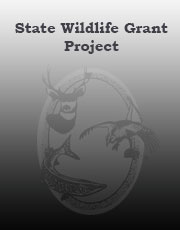An Intensive Study of Swainson's Hawks on the Northern Great Plains
Swainson’s hawks (Buteo swainsoni) are long-distance migratory raptors that nest primarily in isolated trees located in areas of high grassland density. In recent years, anthropogenic conversion of grassland habitat has raised concerns about the status of the current breeding population of the hawk in the northern Great Plains. In 2013, we initiated a study to investigate the influence of intrinsic and extrinsic factors influencing Swainson’s hawk nesting ecology in north-central South Dakota and south-central North Dakota. Using ground and aerial surveys, we located and monitored nesting Swainson’s hawk pairs: 73 in 2013 and 120 in 2014. Apparent nest success was 40% in 2013 and 58% in 2014. Overall, 163 chicks fledged; 1.63 fledglings per successful pair in South Dakota and 1.68 fledglings per successful pair in North Dakota. We captured and radio marked 15 breeding Swainson’s hawks to evaluate home range size during the breeding season. We estimated 95 % and 50% minimum convex polygon home ranges for 10 breeding Swainson’s hawks in 2013 (1.91 km2 and 0.24 km2) and 9 in 2014 (2.10 km2 and 0.58km2); males and female home ranges were similar (P = 0.12). We used Program MARK to evaluate the influence of land cover on nest success resulting in two competing models. Model SState indicated that nest success differed between states, which was 0.35 (95% CI = 0.28–0.43) and 0.19 (95% CI = 0.12–0.30) in North Dakota and South Dakota,respectively. Model SDist2Farm+%Hay indicated that nest survival was greater in closer proximity to farms and with decreased percent hay cover. We used logistic regression analysis to evaluate the influence of landscape variables on nest site selection; percent row crop negatively affected nest site selection whereas percent housing development positively affected nest site selection. Home range sizes in our study area were smaller than previously documented and analysis of covariance model results indicated that home range size was influenced by the percent of grassland and development within their breeding home ranges. Our results indicate that Swainson’s hawks maintain a high degree of breeding site fidelity and that home range size is influenced positively by the presence of grasslands and negatively by percent development. We suggest that tree belts associated with farmsteads, whether occupied or not, provide critical breeding sites for Swainson’s hawks in the northern Great Plains.

